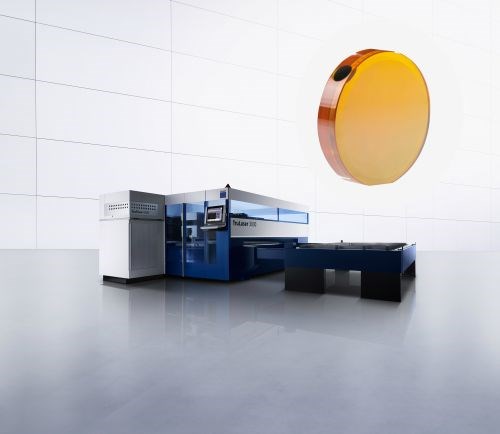An Eye on the Inside
There are myriad applications for RFID technology. This article shows an atypical one—how it’s used to monitor the degree of contamination on a laser cutter lens so an operator doesn’t have to.
Share






The lens shown in the upper right corner of the image has an RFID tag for monitoring and sending data to the operator of the TruLaser 3030 laser cutting machine seen below.
Radio frequency identification, or RFID, tags are tiny wireless devices that work like smarter UPC barcodes. Like a barcode, an RFID tag records information about a product or other item to which it is attached. However, unlike a barcode, the RFID tag can track information about its subject over time and does not need to be scanned to be read—it can send its data wirelessly to a reader via radio waves.
The applications for manufacturing are endless—process traceability, tool use monitoring and more. Here’s another: ’s TruLaser 3000 series laser cutting machines now feature an RFID-equipped lens to record important maintenance information. The RFID chip monitors the lens’s degree of contamination and tracks when it is cleaned. Having this information on hand means that operators only intervene when needed and visual inspections of the lens aren’t necessary. According to Trumpf, leveraging the RFID technology can reduce cleaning times by as much as 40 percent.
Related Content
-
How to Successfully Adopt Five-Axis Machining
While there are many changes to adopt when moving to five-axis, they all compliment the overall goal of better parts through less operations.
-
Inside a CNC-Machined Gothic Monastery in Wyoming
An inside look into the Carmelite Monks of Wyoming, who are combining centuries-old Gothic architectural principles with modern CNC machining to build a monastery in the mountains of Wyoming.
-
High RPM Spindles: 5 Advantages for 5-axis CNC Machines
Explore five crucial ways equipping 5-axis CNC machines with Air Turbine Spindles® can achieve the speeds necessary to overcome manufacturing challenges.
.jpg;width=70;height=70;mode=crop)












